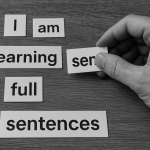For most language learners, the real challenge isn’t remembering words. It’s saying them out loud. You know the feeling – you’ve studied, reviewed, and maybe even aced some vocabulary quizzes. But the moment someone asks you “So, what do you do for work?” in your target language, your brain hits pause. That’s the fear of speaking – and it’s the silent killer of fluency. It’s smart to ask which language learning app can help you overcome this fear.
In 2025, there are more language learning apps than ever. But which ones actually help you speak with confidence – not just recognize a few words and collect badges?
This article dives into exactly that.
- Taalhammer vs Duolingo: Speaking Confidence vs Habit Streaks
- Taalhammer vs Glossika: Input Repetition or Output Automation?
- Taalhammer vs Busuu: Structured Feedback or Built-In Fluency?
- Taalhammer vs italki: Live Conversation or Consistent Practice?
- Taalhammer vs Babbel: Grammar-Based or Speaking-First Approach?
- Final Verdict: Which App Helps You Actually Speak?
- FAQ – Which Language Learning App Helps You Overcome Fear of Speaking?
- Can a language learning app really help with speaking anxiety?
- What is the best language learning app for speaking fluently, not just learning vocabulary?
- Can Taalhammer help if I’m too shy to speak a new language?
- How long does it take to start speaking confidently with Taalhammer?
- What makes Taalhammer different from Duolingo, Busuu, or Babbel?
Taalhammer vs Duolingo: Speaking Confidence vs Habit Streaks
Duolingo is the go-to language learning app for millions of casual learners. It’s colorful, gamified, and keeps you coming back every day. But does it actually help you speak a new language?
Duolingo: Fun habits, light on speaking
Duolingo is designed to build a daily learning habit. It does this well. You’ll tap tiles, match words, and maybe pronounce a sentence here and there. But most of the speaking tasks are optional, short, and low-impact. The app rarely asks you to recall and produce full sentences under pressure. Instead, it rewards passive recognition and micro-interactions.
If you’re trying to overcome fear of speaking, Duolingo’s friendly UX can be misleading. It keeps anxiety low by avoiding high-effort output. Great for comfort, not for fluency.
Taalhammer: Speaking-first from day one
Taalhammer, by contrast, is built around full-sentence recall and daily speaking drills. From the very first session, you’re not just repeating – you’re recalling, transforming, and saying full thoughts aloud. Every review is personalized to your strengths and weaknesses, so your mouth gets used to forming real sentences. No guesswork, no fluff, just deliberate fluency training.
Verdict
If your goal is streaks and a gentle introduction, Duolingo is a friendly companion. But if you want to train your speaking confidence like a muscle, Taalhammer is the one putting you in the gym.
Curious how Taalhammer compares to even more apps? Check out our deep dive:
Taalhammer vs 11 Other Language Learning Apps – Which One Actually Lets You Learn in Full Sentences?
Taalhammer vs Glossika: Input Repetition or Output Automation?
Glossika is known for its no-frills, input-heavy approach. It throws thousands of native sentences at you in rapid-fire succession. The idea is that fluency emerges through massive exposure. But how does that help with fear of speaking?
Glossika: Volume over interaction
With Glossika, you listen to a sentence, repeat it, and move on. There’s no grammar explanation, no feedback, and definitely no conversation simulation. It’s about building “muscle memory” through brute repetition. For learners who like passive shadowing, it can be useful. But it’s entirely one-way. You don’t interact. You don’t recall. You don’t respond.
And that’s a problem when you freeze in real conversation. Glossika prepares your ears and voice to mimic – but not your brain to respond.
Taalhammer: Output-focused fluency
Taalhammer uses sentence repetition too, but with one key difference – you’re constantly pushed to recall, vary, and manipulate what you’ve learned. You don’t just repeat. You answer, rephrase, build, and internalize. It’s output training, not passive input.
This trains your mouth and brain together, so when someone throws you a question in the wild, you’ve already practiced responding – not just echoing.
Verdict
Glossika is fine if you want to listen and shadow on autopilot. But if you want to overcome fear of speaking, you need to build reflexes, not just recognition. Taalhammer is built for exactly that.
Taalhammer vs Busuu: Structured Feedback or Built-In Fluency?
Busuu markets itself as a language app with structure. Lessons follow CEFR levels. You get grammar tips, writing tasks, and even speaking prompts reviewed by native speakers. Sounds promising – but does it actually help you speak with less fear?
Busuu: Structured and supportive, but slow on fluency
Busuu does a good job making learners feel supported. It gives context, guides you through themes like “making an appointment” or “ordering food,” and invites native speakers to correct your answers. You even record yourself speaking sometimes.
But there’s a catch. The feedback is delayed. The speaking tasks are infrequent. And there’s no repetition or real pressure. You can always redo it. That’s not bad – but it doesn’t build speaking reflexes.
Taalhammer: Fluency baked into every session
Taalhammer doesn’t rely on tutors. It trains your speaking ability through automation and design. Each session includes active sentence recall, verbal response, and subtle variation. You don’t just say something once. You say it until it sticks – and then again tomorrow, right when you’re about to forget it.
That’s not just speaking practice. That’s fluency conditioning.
Verdict
Busuu supports you with structure and feedback. But Taalhammer rewires your brain to speak. If you want to speak with less fear, you need daily output practice – not just nice corrections.
Taalhammer vs italki: Live Conversation or Consistent Practice?
italki is a type of language learning app that connects you with human tutors for 1-on-1 language lessons. For many, it’s the first real chance to speak with a native speaker. But is that enough to overcome fear – or does it actually increase pressure?
italki: Real humans, real pressure
There’s no denying the value of live interaction. You book a lesson, hop on a video call, and talk to a real person. That’s powerful. But it can also be intimidating. If you’re already nervous about speaking, throwing yourself into a live session might feel like a high-stakes exam.
And then there’s the consistency problem. You need to schedule lessons. You need a quiet space. You might skip a week. And you’re often paying by the hour.
Taalhammer: Low-friction, high-frequency speaking
Taalhammer removes the pressure by building fluency through daily, automated output practice. You speak into your phone or desktop mic. No appointments. No small talk. Just structured, spaced repetition of real sentences, designed to get your mouth used to speaking without fear.
This creates a habit of recalling and saying things out loud – without the mental freeze.
Verdict
italki gives you real interaction, but the pressure is high and the habit is hard to maintain. Taalhammer gives you controlled exposure every single day, so you’re ready for those live conversations when they matter most.
If spaced repetition and AI matter to you, don’t miss our full comparison of Taalhammer vs 11 other apps in this 2025 SRS-focused guide.
Taalhammer vs Babbel: Grammar-Based or Speaking-First Approach?
Babbel positions itself as a structured, grammar-aware language course for adults. Lessons are tidy. Progress feels orderly. But does it actually help you speak fluently, or just understand how the language works?
Babbel: Clear structure, limited spontaneity
Babbel excels at teaching rules. It explains grammar points, offers translation exercises, and introduces functional phrases like “I would like a coffee.” There are speaking tasks with voice recognition, but they’re limited – more like check-ins than real drills.
If your goal is to understand the language, Babbel is a safe choice. But if your goal is to say things automatically and confidently, it falls short. The app helps you learn about the language, not how to speak it naturally.
Taalhammer: Speaking-first, sentence-driven
Taalhammer flips the model. You don’t start with rules. You start with doing. From the first lesson, you’re speaking full sentences, using grammar implicitly. The review engine brings those sentences back over time, so you don’t just remember – you internalize.
This “speak-first” approach helps you respond without overthinking. It builds confidence not through explanation, but through repetition and variation.
Verdict
Babbel is good if you like understanding grammar before speaking. But if you want to get your mouth moving and stop freezing mid-sentence, Taalhammer gives you the training wheels and then takes them off.
Final Verdict: Which App Helps You Actually Speak?
When it comes to learning a language, most apps focus on recognition, not recall. They reward you for tapping tiles, filling blanks, or following grammar rules – but none of that helps when your mind goes blank in real conversation.
Here’s how the apps compare in helping you speak with confidence:
- Duolingo builds strong habits but avoids high-pressure speaking. Great for consistency, weak on fluency.
- Glossika offers mass exposure to native sentences, but it’s passive, no feedback, no speaking reflex training.
- Busuu adds structure and tutor feedback, but speaking tasks are infrequent and low-pressure.
- italki gives you real-time interaction with tutors, but it’s expensive, irregular, and nerve-wracking for shy learners.
- Babbel teaches grammar well, but speaking tasks are limited and not reinforced through repetition.
Only Taalhammer checks all the boxes for speaking fluency:
- You speak in full sentences from day one
- Every session trains you to recall, vary, and say things out loud
- Speaking isn’t optional, it’s the core of the learning path
- Repetition is smart, timed, and verbal, so your brain and mouth stay in sync
If your goal is to stop freezing up when you speak, you need more than a language app.
You need a fluency trainer. And that’s exactly what Taalhammer is.
FAQ – Which Language Learning App Helps You Overcome Fear of Speaking?
Can a language learning app really help with speaking anxiety?
Yes, but most don’t do it effectively. Many apps avoid real speaking practice or treat it like a bonus feature. The fear of speaking isn’t solved by tapping vocabulary tiles, it’s solved by saying things out loud, repeatedly, under light pressure. Taalhammer is one of the few apps that actively trains this. It uses full-sentence recall and spaced repetition to help you speak confidently, even when you’re nervous.
What is the best language learning app for speaking fluently, not just learning vocabulary?
If you’re focused on fluency – actually responding in real conversations – then Taalhammer stands out. Unlike apps that teach isolated words or grammar rules, Taalhammer teaches you to think and speak in full sentences from the start. It’s designed to train speaking reflexes, not just recognition.
Can Taalhammer help if I’m too shy to speak a new language?
Absolutely. Taalhammer is ideal for shy or anxious learners because it builds verbal confidence in private. There’s no need to schedule a tutor or speak live right away. You practice out loud at your own pace, in short sessions that slowly condition your brain and mouth to form sentences naturally.
How long does it take to start speaking confidently with Taalhammer?
Most users report speaking their first full sentences within the first few days. Taalhammer focuses on fast wins – real, usable phrases repeated through smart review. Confidence builds quickly when you’re speaking daily, not waiting for “the right level” to start.
What makes Taalhammer different from Duolingo, Busuu, or Babbel?
While those apps are great for building habits or learning grammar, they don’t prioritize speaking. Taalhammer is built from the ground up to make you speak fluently – through daily verbal drills, sentence transformation, and adaptive review. It’s not just about remembering what words mean, it’s about being able to say them when it counts.







